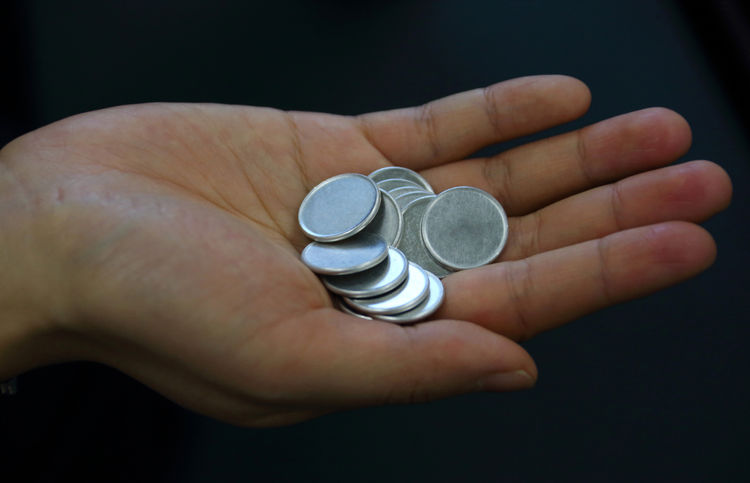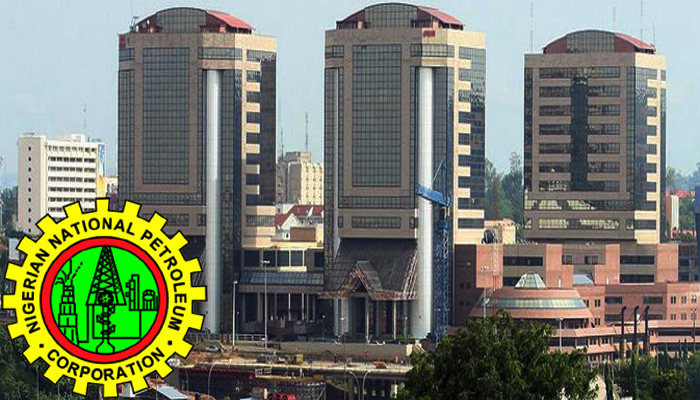Unless you were living on Mars, and even there they probably heard the news, the FOMC hiked the Fed Funds rate by 0.75% overnight to a target range of 1/50%-1.75%, as anticipated by the market. The Fed downgraded its US growth forecasts for 2022 and 2023 but remained adamant there would be no recession. I’m not so sure on this one given their track record over the last couple of years. The Fed’s dot plot was also moved higher with year-end rates expected to be 3.40% from 2.80% previously. That implies another 1.75% of hiking is still to come in 2022. The accompanying statement also inserted the words “strongly committed to returning inflation to its 2.0% objective.”
All nice and hawkish you say. Indeed, it was but the result was actually an intraday buy everything rally as sentiment rebounded. US bond yields recorded 20+ bps falls, stocks shot higher, while the US Dollar fell and gold and cryptos rallied. The reason was that Fed Chairman Powell said that the overnight 75-basis-point hike was unusually large and that he didn’t expect such moves to be common. Hopes that the Fed would hike at a less angry pace over the rest of the year was enough for the downtrodden buy-the-dippers to flock back into the market. Markets like their large rate hikes to be rare and not well done.
That said, the buy everything rally was somewhat uneven. The rise in US stock markets overnight came nowhere near unwinding the five-day selloff preceding the FOMC meeting. US bond yields across the curve remain well North of 3.0% despite falling overnight. In the currency space, the rebound versus the US Dollar was decidedly uneven. USD/JPY traded in a 200-point range overnight and finished 1.20% lower at 133.80, while AUD/USD leapt nearly 2.0% higher, with even a bombed-out Sterling gaining 1.45%. But in the EM space, Asian currencies booked only modest gains and as the reality of a widening interest differential and slowing US economy dawns, those gains are being reversed this morning. Bitcoin managed a dead-cat bounce of $20,000.00 but cryptos remain in the naughty corner, while gold remains in an induced coma.
Most interesting was EUR/USD which managed to close just 30 pips to 1.0445 overnight, an attempted rally towards 1.0500 being repelled with ease. There is drama in Europe anyway, with the general rise in government bond yields across the globe presenting itself in an undesirably way in Europe. While Northern Europe yields have moved higher, the southern Club Med countries, led by Italy, have seen outsized rises, with Italian BTPs climbing to 4.20% sending alarms ringing. That led to an “ad hoc” meeting by the ECB council yesterday to address the “fragmentation” problem. The ECB said it would accelerate the development of an anti-fragmentation monetary tool and would tinker with rollovers of its stock of QE-don’t call it QE-bonds. We can read that as they will let Northern Europe holdings mature, while rolling over Club-Med holding, just don’t call it selective QE forever, ok?
Italian BTP yields duly fell back to 3.80%, but the rapidity of European bond market fragmentation, and the unusual urgency of the ECB to address it, have revealed the soft underbelly of Europe and the Euro that has never gone away since its creation. The prospect of ECB intervention to bolster the Italian government balance sheet forever has rightly capped gains in the single currency. On top of that, reduced flows of natural gas from Russia have sent European gas prices spiralling, and with a war on its Eastern frontier, creating a bullish case for the Euro requires a fertile imagination.
In Asia today, we have also received a slew of data. The New Zealand Dollar was another underperformer overnight, and today’s GDP shows that the bubble created by the Reserve Bank of New Zealand and the New Zealand Government over the pandemic is deflating rapidly. GDP Growth QoQ for Q1 fell by 0.20% against an expected increase of 0.60%. The YoY Q1 print rose only 1.20%. The Reserve Bank, in particular, has left New Zealand with Norwegian prices and Nigerian wages and this data doesn’t even encompass catch-up RBNZ tightening and mortgage rate resets to come. Little wonder the NZD is setting the world on fire and New Zealand remains top of my list for a hard landing this year.
South Korean Export and Import prices rose 23.50% and 36.30% respectively in May YoY, a slight increase from April. That will keep the pressure up on the Bank of Korea to hike again in July, it’s just by how much. Japan’s Balance of Trade was negative again in May at -JPY 2,385 billion. Exports rose by 15.80%, but Imports leapt higher by 48.90%. Both numbers can be laid at the door of the weaker Yen and the Bank of Japan meeting tomorrow will be the subject of intense focus. Markets are clamouring for the 10-year JGB 0.25% yield cap to be lifted. An unchanged BOJ likely sees the USD/JPY rally resume, but if they surprise and do adjust the corridor, we could see a very violent correction lower by USD/JPY.
The juice is back on the Reserve Bank of Australia today as well after mighty Australian employment data. Although the unemployment rate edged higher by 0.10% to 3.90%, full-time employment in May blew expectations out of the water, adding 69,400 jobs. (-40k exp!) The participation rate rose to 66.70% while part-time employment lost only 9,000 jobs. With labour demand so robust, even as inflation continues to rise, the RBA may need to do more outsized rate hikes in the months ahead.
Taiwan should also hike rates in response to the FOMC’s move today. A hike of 0.25% is baked in and with the inflation backdrop benign in Taiwan, more than that would be a surprise. With USD/NTD remaining near 2022 highs, we can’t rule out the central bank’s surprising markets though, as Asian currencies in general today, have already started reversing their overnight gains.
We also have the Bank of England policy decision this afternoon. Soaring energy prices, robust labour demand, cost of living increases, and a central bank that raised the white flag on imported inflation some time ago, have torpedoed the British Pound. The BOE has quietly gone about its business with a series of 0.25% hikes these past months and I don’t expect that to change today. A potential trade conflict with the EU over the unilateral rewriting of the Northern Ireland Protocol is another headwind the BOE doesn’t need, given the already poor growth outlook. It is another reason to not consider a 0.50% rate hike. That should mean that the Sterling’s overnight rally versus the US Dollar will be temporary.
Given the potential Brexit conflict and trade repercussions between the United Kingdom and Europe right now, the prize for the irony of the week goes to ECB President Christine Lagarde and the London School of Economics. Ms Lagarde travelled from Europe to the United Kingdom yesterday to give a speech and receive an honorary degree from the London School of Economics.
Asian equities struggle to follow Wall Street higher.
Wall Street rallied post-FOMC as Jerome Powell’s post-meeting comments were interpreted as a consistent, but less aggressive pace of rate hikes through the rest of the year. That was all the excuse that the ever-present pent-up buy-the-dip demand needed. The S&P 500 rose 1.46%, the Nasdaq rallied by 2.50%, and the Dow Jones added 0.95%. Today in Asia though, there are already signs that the momentum is waning. US futures continued rallying initially, but have since reversed into the red, with S&P 500, Nasdaq, and Dow Jones futures down around 0.15%.
It should be noted that although US equities and bonds reversed some of their losses, it was only a dent in the scale of recent drops. Although we may not get more 0.75% rate hikes, the Fed has lifted its year-end rate target, so markets can expect at least another 175 bps of tightening this year, no matter what the month-to-month split is. There is a US holiday on Monday, and tomorrow, Goldman Sachs is saying that we will have $3.4 trillion (yes, you read that correctly) of notional options expiries on US-listed indexes and stocks. Ahead of a holiday weekend, expected to impact liquidity anyway, the huge volume of expiries tomorrow could distort market moves and pricing. I would be taking price moves on Wall Street for the rest of the week with a large grain of salt.
In Asia, equity markets have been content to dip their toes back in the water in line with the move higher on Wall Street overnight. That said, much of their early gains have been reversed as US futures fell, with China markets now slightly down, hinting again, that bullish momentum has waned. Japan’s Nikkei 225 is 0.50% higher, with South Korea’s Kospi up 0.60%. Taipei has fallen by 1.0% ahead of an expected central bank rate hike later today.
In Mainland China, markets have reversed early gains to sink into the red. The Shanghai Composite is 0.25% lower, with the CSI 300 down 0.20%. Hong Kong is in retreat, falling 1.50% today. News that the government intends to mass test the city of Shanghai every weekend into July for covid-19 may also be limiting sentiment. As I have said previously, renewed virus lockdowns present a very real threat to Chinese equities.
In regional markets, the picture is more upbeat. Singapore has risen by 0.70%, with Kuala Lumpur gaining 0.70% and Jakarta soaring by 1.60%. Bangkok is 0.60% lower as the Baht struggles and political tensions increase. Manila has gained 0.55%. In Australia, early gains have also been wiped out leaving the ASX 200 down 0.25%, and the All Ordinaries unchanged.
Early European markets may struggle to replicate the ECB-induced gains seen overnight after bullish momentum faded so quickly in Asia today. Early comments from the ECB’s De Guindos that the ECB is determined to tackle fragmentation may give some support in early trading though. If Bund/BTP spreads start widening again today, equities are likely to react negatively.
US Dollar remains firm post-FOMC.
The US Dollar gave back some recent gains overnight post-FOMC as Powell’s comments post-meeting were interpreted as implying a less aggressive scale of rate hikes. To me, that is a flawed interpretation, as the FOMC signalled a higher terminal rate and lifted its end-of-2022 target rate as well. Even if we don’t get any more 0.75% hikes, rates are still going up each meeting and will finish at a higher level. Indeed, the US Dollar retreat was very mixed. It hardly moved against the Euro, and gave only modest gains to the Yen and Asian currencies, while sentiment currencies like the AUD and GBP outperformed.
The dollar index finished 0.60% lower at 104.85, and in Asia, has already regained 0.20% to 105.05. The dollar index has tested, but bounced off support at 104.60 for three days in a row, marking it as an important support and pivot point now. Resistance remains at 105.70 and 108.00.
EUR/USD gleaned only a 0.28% gain to 1.0445 overnight and has already fallen by 0.15% to 1.0430 today. Fragmentation concerns are the new buzzword dogging the central currency now and its price-performance overnight was underwhelming, to say the least. EUR/USD fell through support at 1.0400 overnight in a choppy session, but equally, failed ahead of 1.0500 as well. Support lies between 1.0350 and 1.0360, with resistance at 1.0500 and then 1.0650.
An under-pressure Sterling bounced by 1.46% to 1.2170 overnight, owing the recovery as much to EUR/GBP selling as to the rebound in sentiment post-FOMC. It now faces a BOE rate decision today itself with 25 bps priced in and unlikely to be supportive, particularly if BOE’s economic guidance is negative. Only a 0.50% hike and a tilt to hawkish guidance are likely to keep the rally going. GBP/USD has fallen by 0.20% to 1.2145 in Asia. Support is at 1.1935, with resistance at 1.2200 which has held over the past two sessions.
USD/JPY traded in a wild 200-point range yesterday, finishing 1.22% lower at 133.80 post-FOMC. The Yen rally has faltered already with USD/JPY rising by 0.35% to 134.25 in Asia. Tomorrow’s BOJ policy meeting sets the cross up for another directional move at the end of the week. However, if the BOJ raises the JGB yield cap, USD/JPY could have a potentially ugly move lower. Support is at the overnight low of 133.50, with resistance at the overnight high of 135.60.
AUD/USD was a star of the overnight session, leaping 1.93% higher to 0.7005 has sentiment made an abrupt recovery post-FOMC. It remains unchanged in Asia, having probed the 0.7030 level intraday after strong employment data. If the US equity rally runs out of steam this evening, AUD/USD could well give back most of its gains. It has resistance at 0.7050, with support at 0.6870. NZD/USD rallied less impressively, gaining 1.10% to 0.6285 today where it remains in Asia. Soft GDP data will increase nerves around New Zealand’s economic outlook and appears to be limiting gains. It to will fall if US equities track lower this evening.
USD/Asia has a very muted reaction relatively, to the rebound in investor sentiment after the FOMC policy meeting. Asian regional currencies recorded only modest gains overnight, and today, that has reversed sharply as the prospect of slower US growth and widening US/Asia rate differentials took their toll on local currencies USD/THB, USD/NTD, and USD/KRW are now 0.60% higher today, and yesterday, the Bank of Thailand was sighted intervening. Offshore USD/CNY has risen 0.60% as well, while USD/SGD and USD/INR are 0.20% higher. Overall, the price action by Asian FX has been underwhelming and that suggests that if US markets run out of recovery steam tonight, another wave of selling is inbound for regional currencies.
Oil fall on higher inventories.
Oil prices had another big intraday range overnight, but ultimately, booked only a small retreat, continuing a theme of energy mostly ignoring the noise in equity and bond markets this week. Oil prices finished lower after US official crude inventories recorded another 2 million-barrel gain, and as the FOMC later that evening downgraded its US growth outlook.
Still, by oil’s standards, the falls were modest. Brent crude finished 1.65% lower at $118.85, with WTI retreating by 2.75% to $115.75 a barrel. In Asia, oil has recorded modest gains as Asian buyers take advantage of the overnight price dip. Brent crude and WTI have gained 0.30% to $119.15 and $116.10 a barrel respectively.
The supply/demand situation, higher natural gas prices, the squeeze on refined products, and lost Russian production all mean that oil prices remain constructive at these levels for now.
Brent crude has immediate support and resistance at its overnight low and high of $118.00 and $122.00 a barrel. Failure of $118.00 opens the door to $116.00. WTI’s overnight low at $114.60 is immediate support followed by $114.00 and $112.00. Resistance is at $120.00 a barrel.
Gold’s range continues.
Gold staged a decent recovery overnight as the post-FOMC price action saw a recovery in risk sentiment and a fall by the US Dollar and US yields. Gold rose by 1.40% to $1834.00 an ounce. In Asia, gold has slipped slightly to $1830.50 an ounce.
Despite the overnight recovery in gold prices, gold bugs should not get too excited. The overnight gain only brings gold back to the middle of its one-month $1800.00 to $1880.00 range and gold looks as directionless as ever. The overnight price action shows that the inverse correlation to the US Dollar is as strong as ever.
Gold has resistance at $1840.00 and $1880.00, the latter appearing an insurmountable obstacle for now. Support is nearby at $1805.00 and then $1780.00 an ounce. Failure of the latter sets in motion a much deeper correction, while I would need to see a couple of daily closes above $1900.00 to get excited about the upside.
Bitcoin
I don’t write about cryptos too much as long-time readers will know, I can’t stand the HODL-er hate mail I get, and my opinion on the entire sector can be summed up by reading The Emperor’s New Clothes, and NFTs are very expensive password-locked JPEGs. I would rather not write about it than give the entire circus legitimacy by errr, writing about it.
Still, every now and then, I will post something on the technical picture for Bitcoin, as I acknowledge that cryptos can be interpreted as a tradeable asset, even if they’re not an investible asset class. A similar result can be achieved by taking your life savings and going to the casino and placing it all on black 13.
The Bitcoin chart is fairly simple at the moment, much like myself. Rumours of a Singapore-based crypto-lender-DeFi-hedge fund trying to “work it out with clients” failing sent Bitcoin and Ether plummeting yesterday. The market is also awash with rumours that $20,000.00 is margin-call Armageddon. I don’t know if that is true, but I know there is never just one cockroach and when someone says, “this time it’s different,” it never is.
Bitcoin managed to mysteriously bottom around $20,100.00 yesterday, so I won’t argue with $20,000.00 as support. Failure suggests $16,000.00 as its next technical bullseye, followed by $12,000.00. What is very clear from the charts is that Bitcoin needs to recover above $28,000.00 to move it out of the danger zone and call $20,100.00 the bottom of a Top Gun-like hard deck. “Break it, and you are gone Maverick DeFi NFT Token.”






























